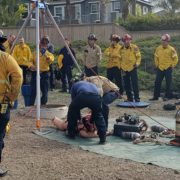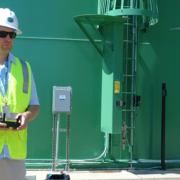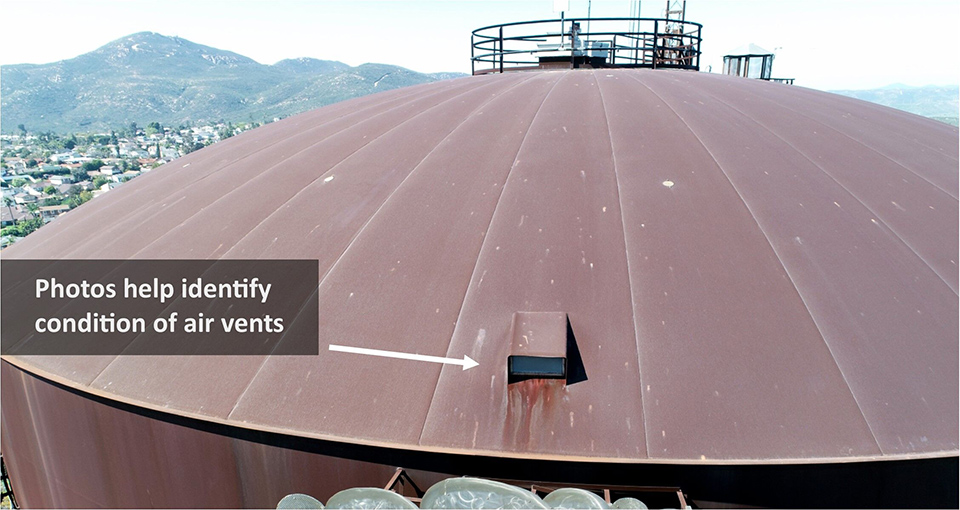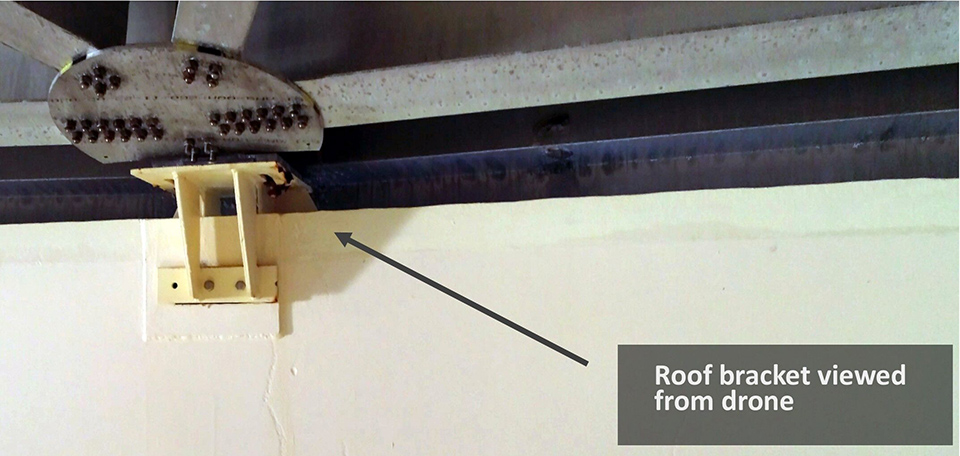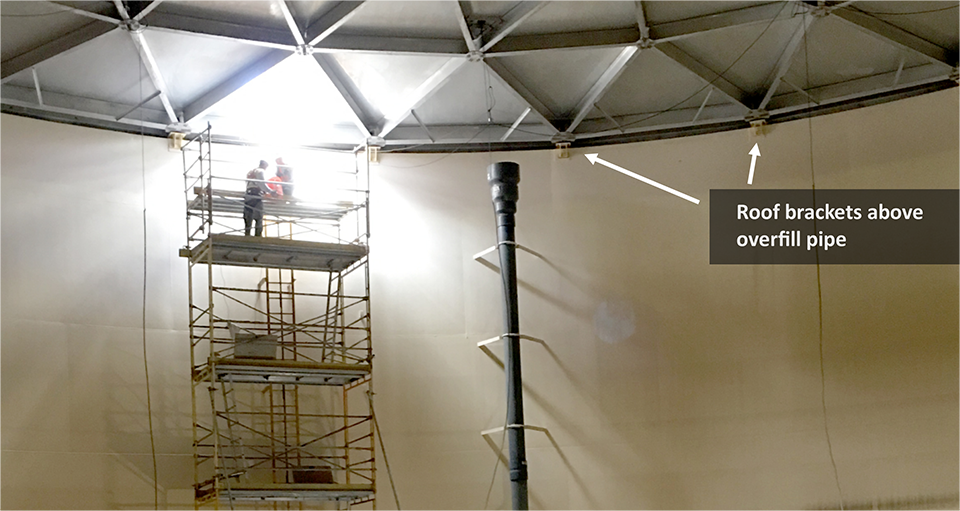Training Preps North County Firefighters for Confined Space Rescues
North San Diego County fire agencies teamed up with Olivenhain Municipal Water District in early December for confined space training drills. The drills prepare firefighting professionals to respond to emergencies in facilities such as water or wastewater treatment plants and are required to maintain their confined space certification.
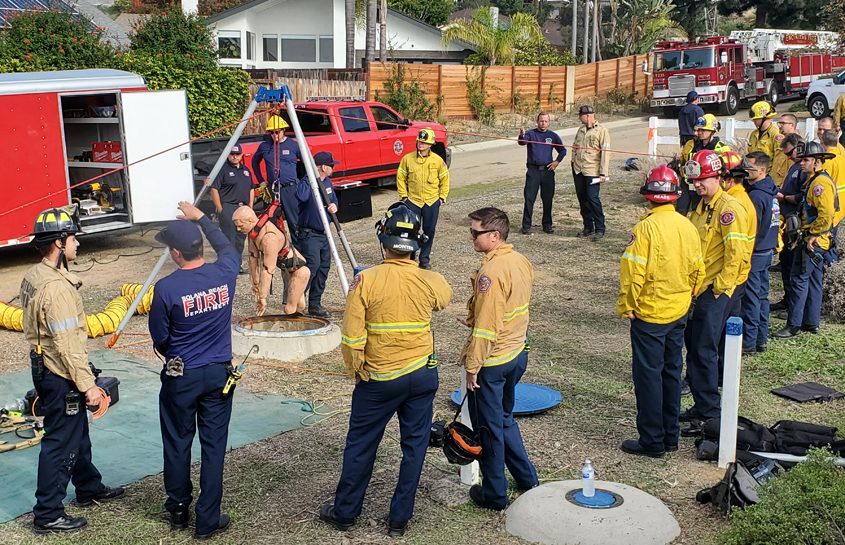
Participants from North County fire agencies benefitted from the opportunity for team building during their recent training exercise hosted by the Olivenhain Municipal Water District. Photo: Olivenhain Municipal Water District
This year, training took place in one of OMWD’s water transmission vaults. Firefighters were able to use the vaults to practice confined space entries and other rescue scenarios. Fire personnel worked with OMWD staff in a team effort, and both groups benefitted from the opportunity to understand each other’s equipment and protocols.
Participating fire agencies include the Cities of Carlsbad, Del Mar, Encinitas, Oceanside, San Marcos, Solana Beach, North County, Vista, and the Rancho Santa Fe Fire Protection District.
Preparing for emergencies
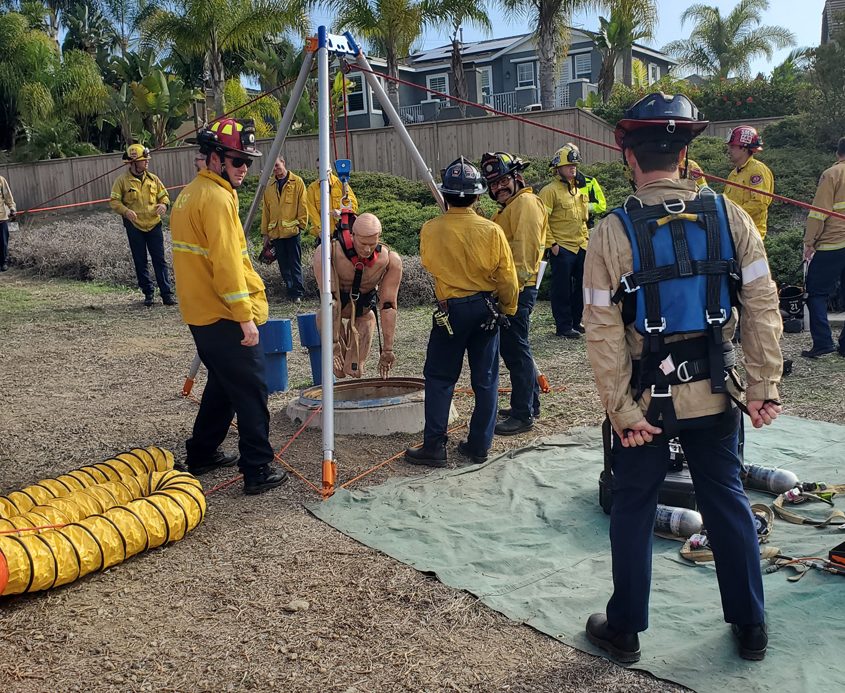
As a result of training with OMWD, North County fire agencies can now respond more efficiently and confidently to similar facilities thanks to establishing working relationships in advance of emergencies. Photo: Olivenhain Municipal Water District
Confined space permits are required by OSHA before making any kind of confined space entry or rescue. OMWD and other member water agencies use such permits. Bob Topolovac, OMWD board director, said, “The confined space training with the fire agencies helps everyone prepare for emergencies that could happen in similar facilities.”
OMWD staff reviewed the conditions and possible actions within the vault space with fire crews. Participants discussed decision-making for confined space entry and conditions they might encounter, such as chemical exposure and electrical lock-out/tag-out requirements.
As a result of training, fire agencies can now respond more efficiently and confidently to similar facilities thanks to establishing working relationships in advance of emergencies. “We appreciate the collaboration with local fire agencies to ensure we’re all prepared for potential future emergencies. We look forward to supporting future training exercises,” added Topolovac.
(Editor’s note: The Olivenhain Municipal Water District is one of the San Diego County Water Authority’s 24 member agencies that deliver water across the metropolitan San Diego region.)

